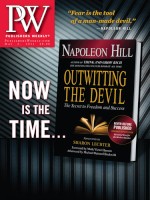The dynamics of the digital book market in early 2011 closely resemble the dynamics before the holiday buying surge, with the notable difference that many more book buyers now have some form of digital reading device. That was one of the key findings in Codex Group's "Book Publishing Digital Transition Report: 1st Quarter 2011" conducted among 9,175 book buyers in February.
Despite the jump in both the number of digital readers and book buyers with devices, the percentage of book readers who said they only read digital books remained below 1% in February, while the percentage of readers who said they will only read print books stayed at 40%. Peter Hildick-Smith, president of Codex, said he expected to see an upward shift in the number of people only reading digital books and a decline in book buyers who said they intend to stick solely to print.
Thirty-three percent of book buyers said they read both print and digital books, and 26% said that while they only read print books now, they are thinking about reading a book on a digital device. The high percentage of readers who want to read only print books combined with the majority of digital device owners who read both e-books and print books makes it all the more important for publishers to preserve as much retail space as possible or risk losing print readers altogether, Hildick-Smith advised.
To be sure, the number of digital reading devices will grow substantially in 2011, with Codex predicting that 43% of book buyers will own either a dedicated e-reader or a tablet by the end of the year (some will own both). Still, Hildick-Smith noted, there is little indication that consumers are looking to stop buying and reading print books; what could change that scenario, Hildick-Smith said, is if the number of bookstores and other outlets selling books shrinks dramatically.
The attitude among book buyers toward tablets (almost entirely the iPad) and e-readers (primarily Kindle and Nook) also showed little change between November and February, with Kindle and Nook owners showing much higher levels of satisfaction with the reading experience than iPad owners. While 48% of Kindle owners said they prefer to read digital books rather than print books, only 38% of iPad owners preferred digital.
Another preholiday trend that held true in the new year was the dominant position fiction held in the e-book market, accounting for 79% of e-book sales.
A final trend that carried through the holidays was Amazon's hold on the sale of e-books and the higher share of wallet Amazon gets from readers who buy a Kindle. Amazon's business with book buyers triple once they buy a Kindle, Codex found, a finding that was consistent with Amazon executives' comments about first-quarter results attributing its strong sales gains to growth of both digital and physical products. The combination of e-book and print book sales gave Amazon a 15.8% share of units sold in February. That combination dwarfs sales generated through Apple's iBookstore, which Codex found had only a 0.8% share of unit sales in February. While the iPad has been a huge success, selling about 20 million units since it was introduced a year ago, it has not translated into e-book sales comparable to those through the Kindle store or BN.com. One reason for that, Hildick-Smith believes, is that not enough e-books include color that would take advantage of the iPad's color capability.
While the entry of Apple into the e-book market provided competition for Amazon, and the introduction of the agency model helped stem the downward slide of all e-book prices, Hildick-Smith believes Apple's sales of e-books "are far less than they should be." And while sales of all e-books will continue to rise, the overall e-book performance to date is not enough to offset the potential loss of print book sales that would take place if the number of book retailers plunge, Hildick-Smith said.



 Volume 258
Issue 18
05/02/2011
Volume 258
Issue 18
05/02/2011





